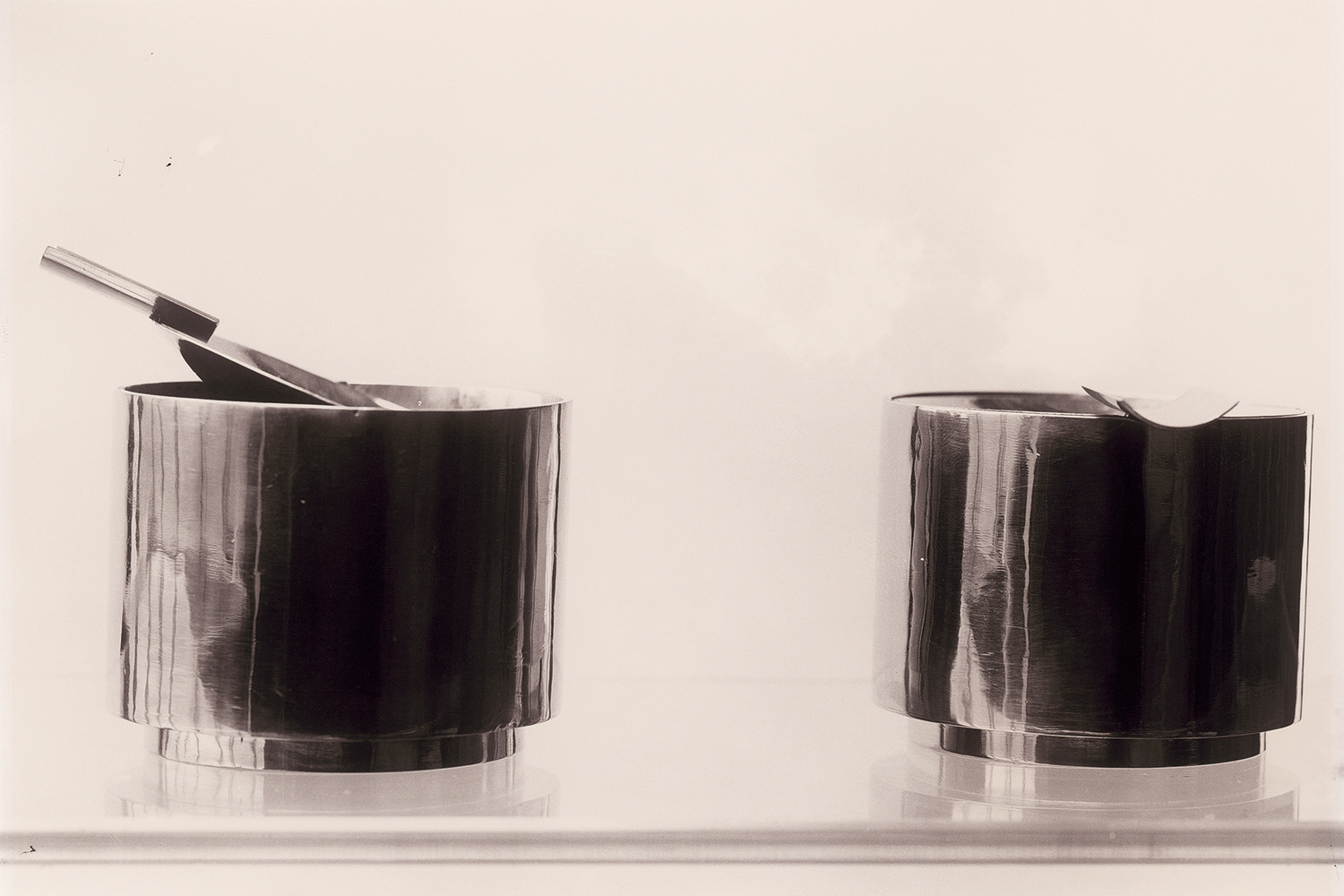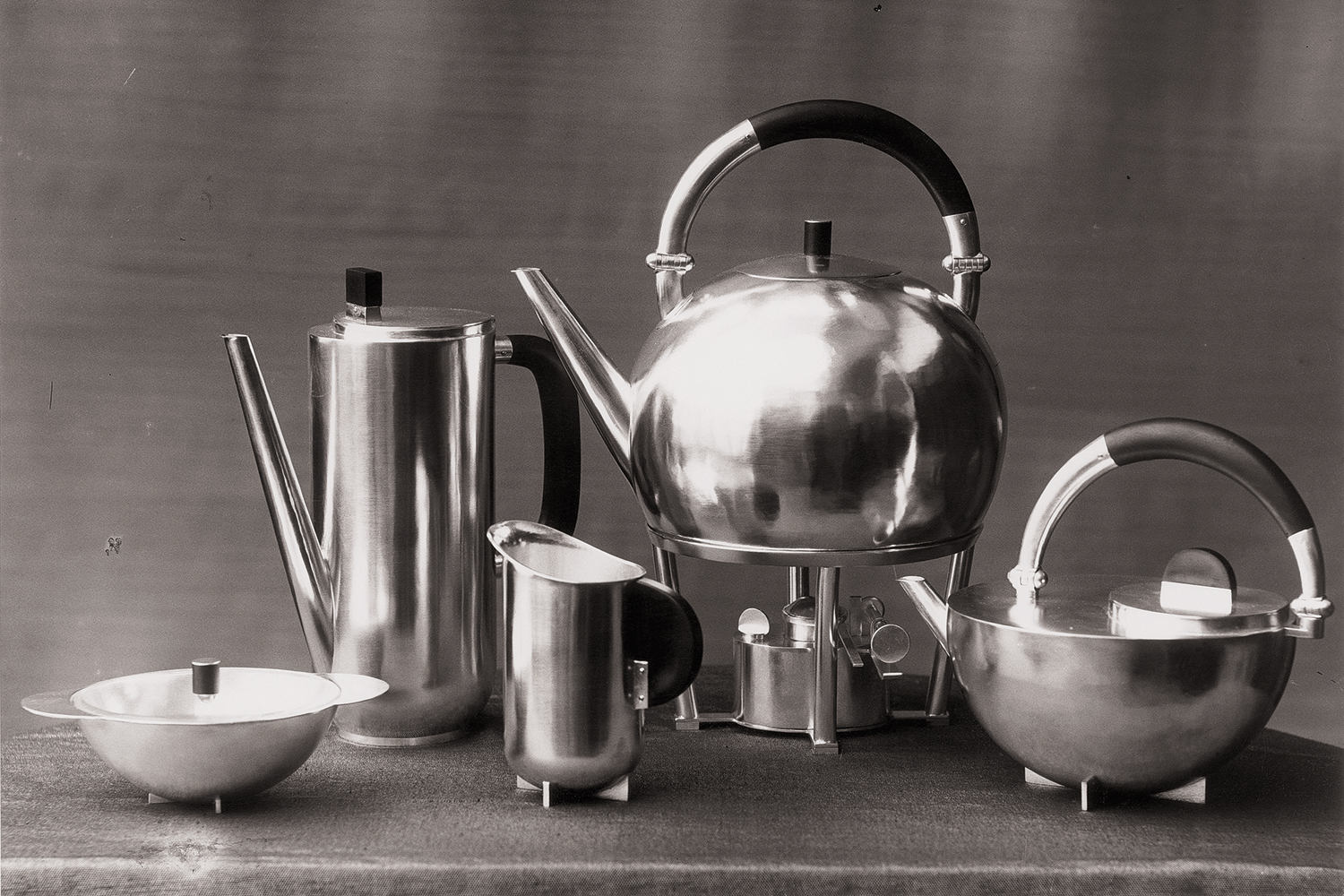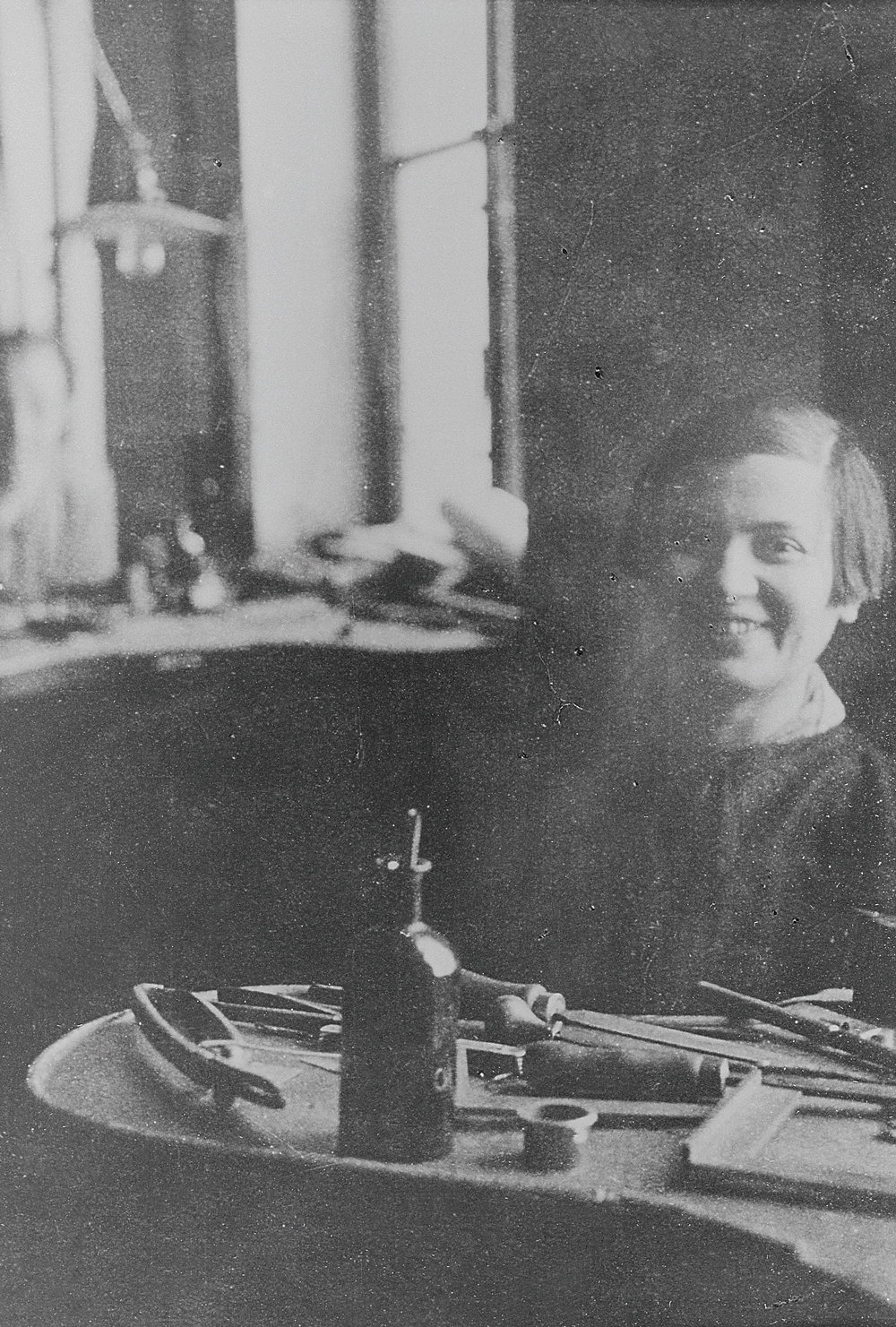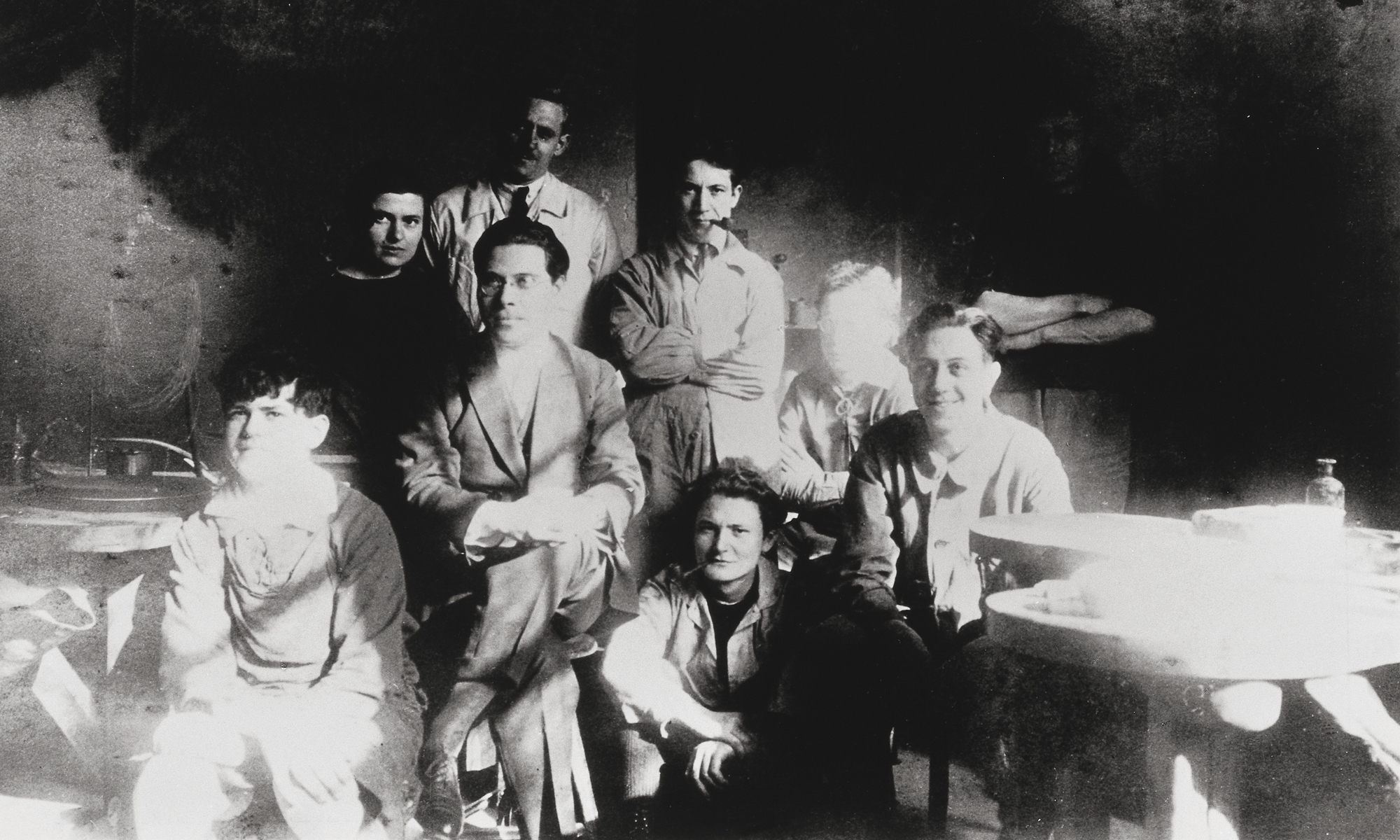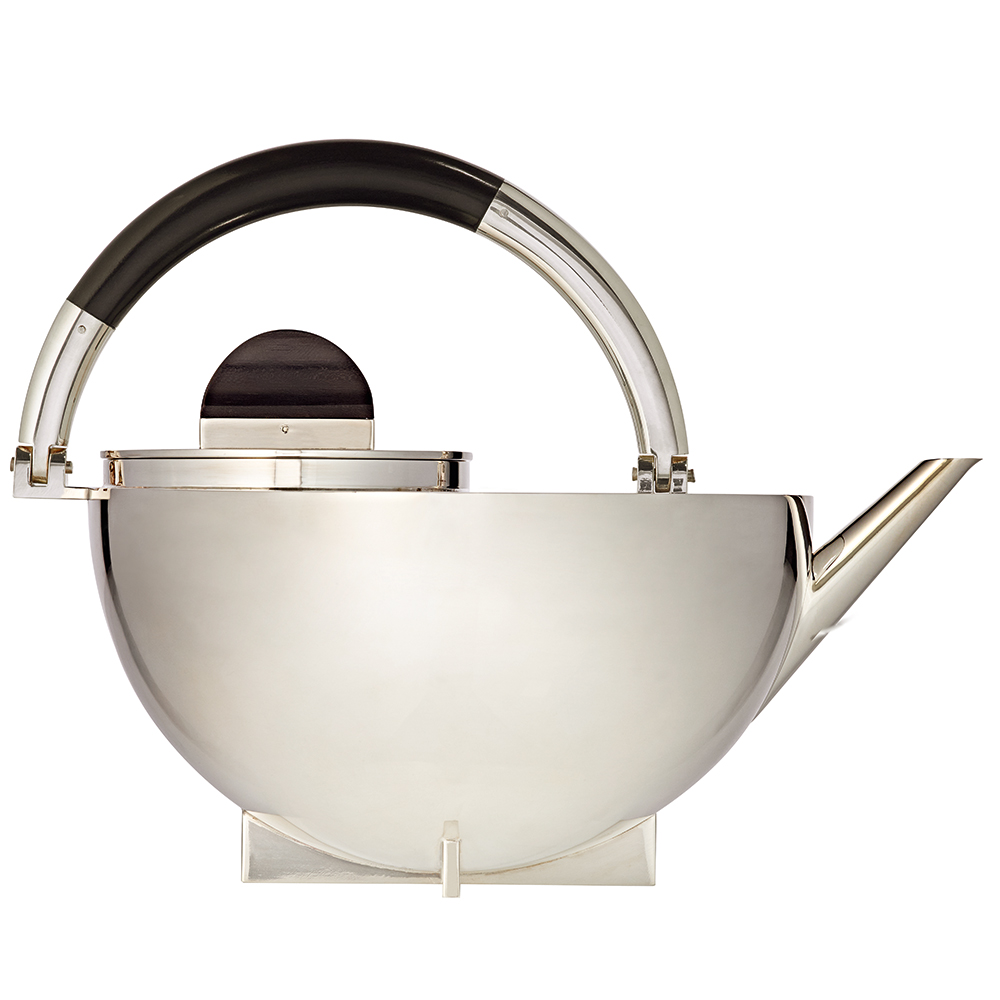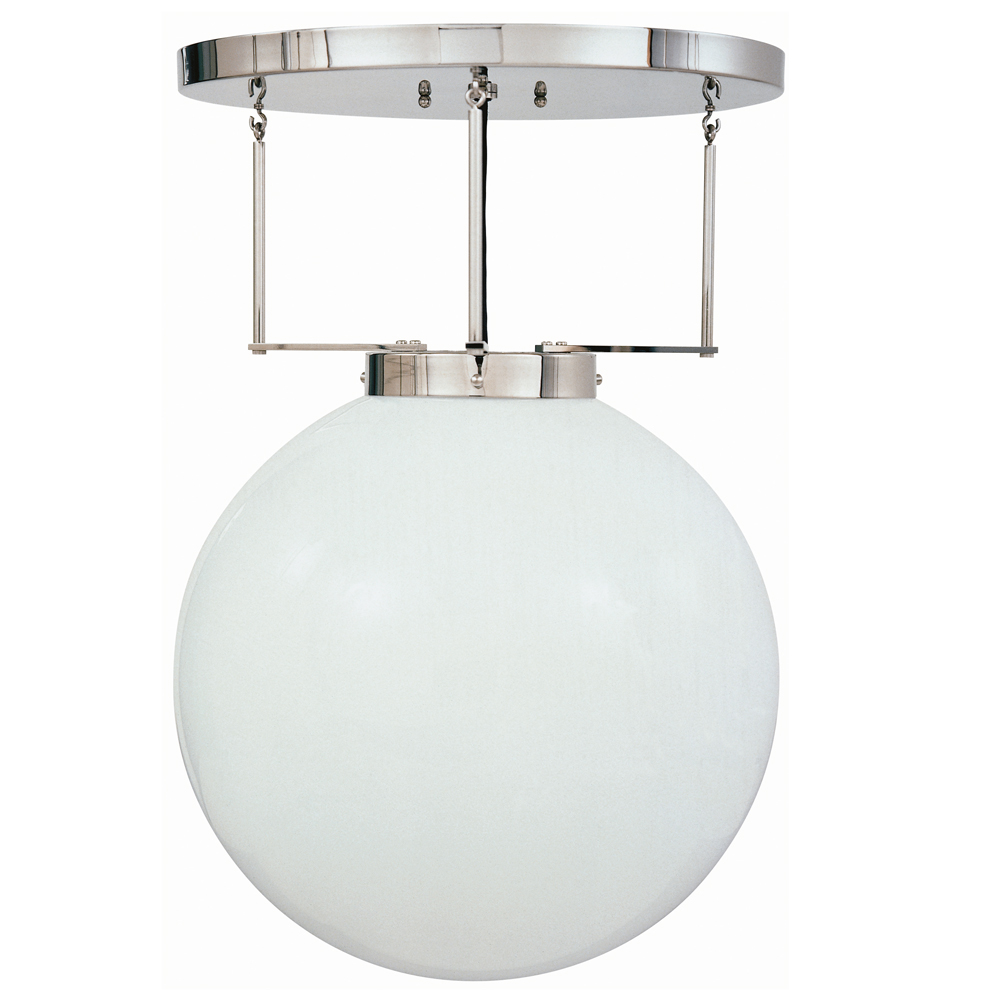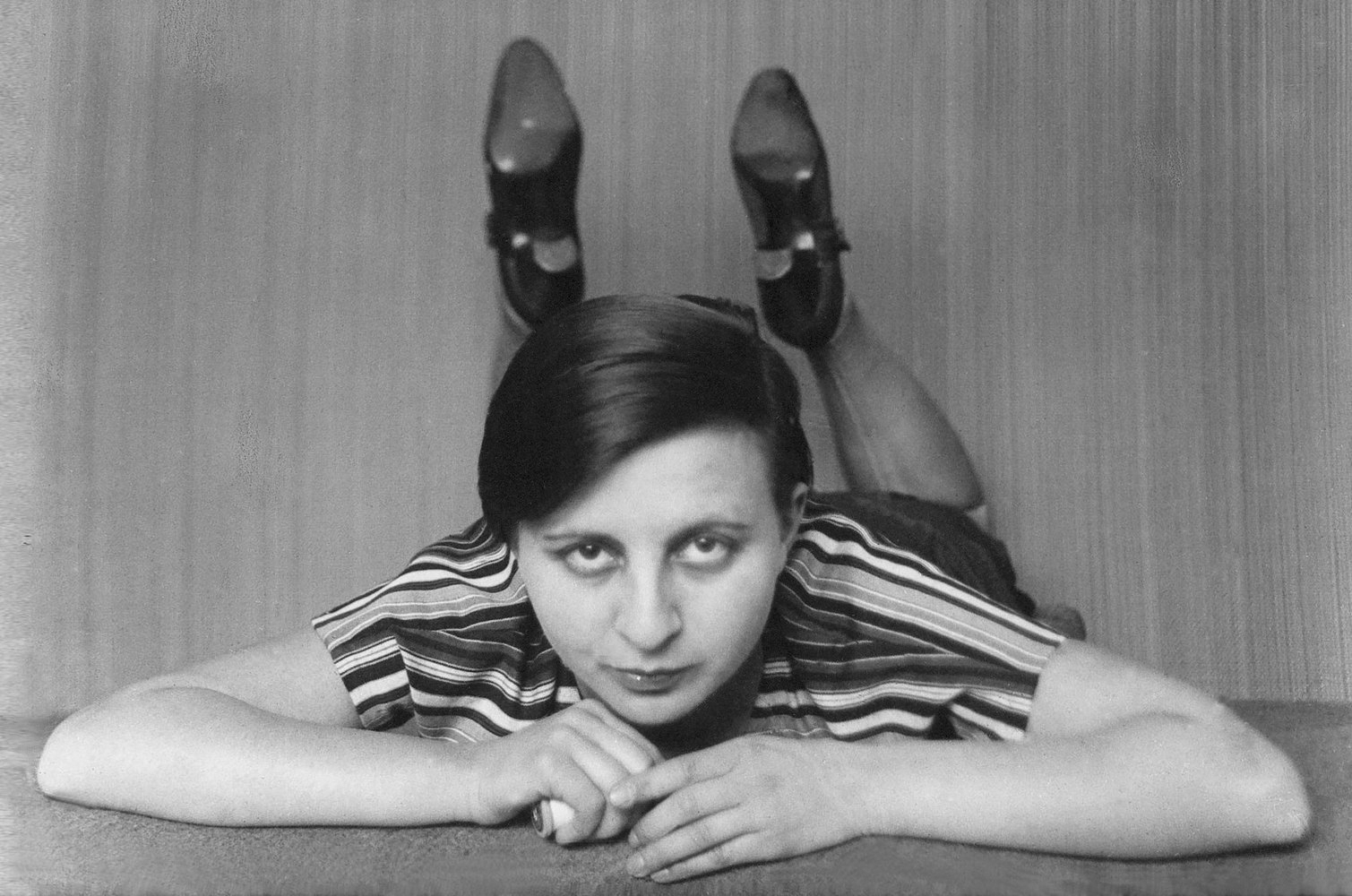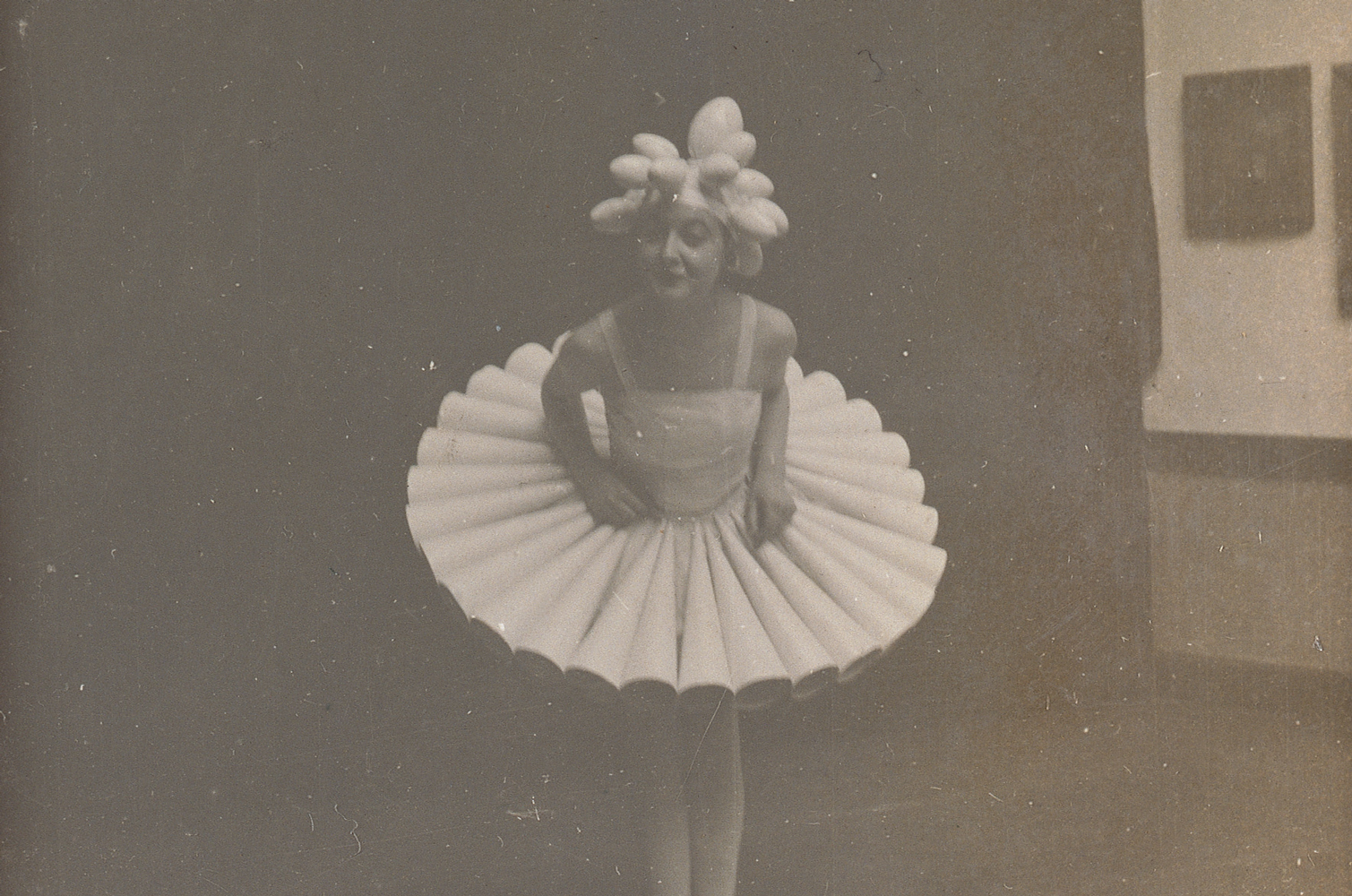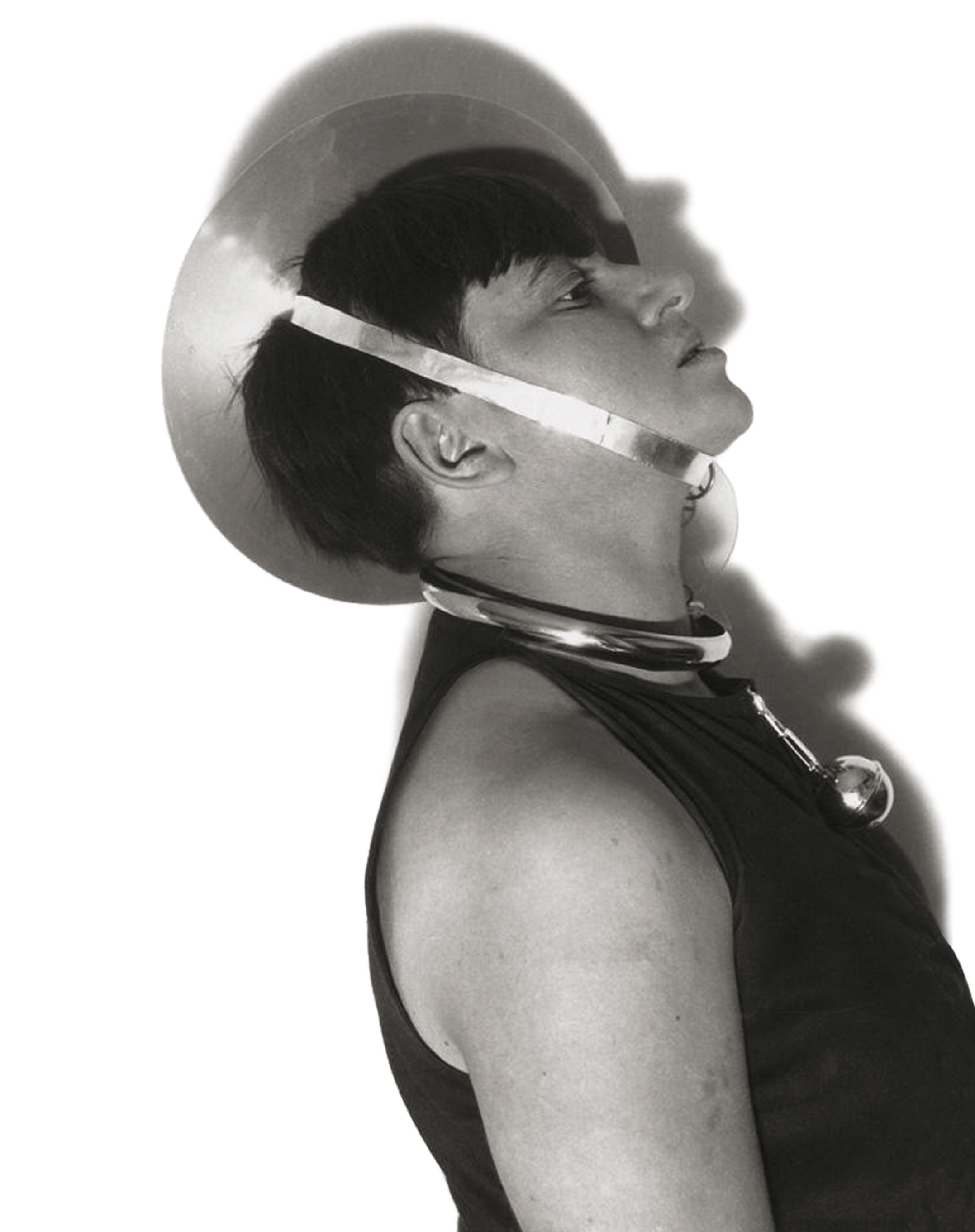
The designs put on display back then met with an excellent response from the open-minded Americans; especially the objects that emerged from the metal workshops drew attention, in particular those designed by Marianne Brandt. The fact that Walter Gropius directed such a clear focus onto Marianne Brandt’s designs during the exhibition was in part due to the extraordinary aesthetic quality of these objects. These works distinguished themselves fundamentally from most of the other designs both in shape and proportion as well as in their aesthetic appearance. In addition, Gropius used the attention that was generated to refer to Brandt and other Bauhaus designers, who in the meantime were scattered around the whole world.
If you leafed through the exhibition catalogue you would inevitably stop at her work. It is no coincidence that Gropius selected the tea and coffee set, created in 1924, in silver as well as a model of the teapot in silver-plated nickel, which celebrates the primary geometric shapes of Modernism in its hybrid appearance, while simultaneously radiating virtual, classic elegance. We know this rare effect from other truly outstanding designs of the 20th century, for instance Mies van der Rohe’s Barcelona Chair, designed in 1929.
However, the spotlight that was granted by the large-scale exhibition in New York, did not reach the originator of these masterpieces in Germany. originator of these masterpieces in Germany. Brandt was denied the new vital biographical branching that we know happened to Josef and Anni Albers, the Gropius couple, Moholy-Nagy or Mies.
